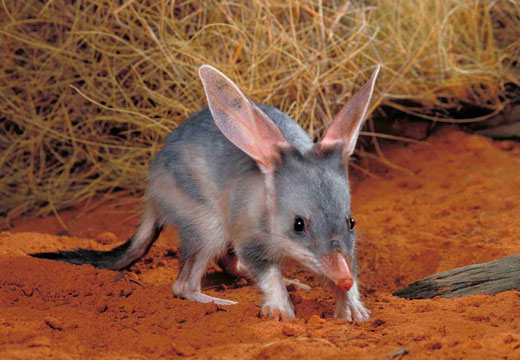
Bilby
These cute little animals are an endangered species. Bilby’s don’t drink water, they get enough from the food they eat. They sleep during the day in deep burrows and forage at night and are found mostly throughout the arid, dry areas of Australia.
The bilby is a unique animal, and is well known within Australia. It has become a popular native alternative to the Easter Bunny, known as the Easter Bilby.
Once widespread in arid, semi-arid and relatively fertile areas, the Greater Bilby is now restricted to arid wastelands and remains endangered. It makes its home in a burrow that spirals down, making it hard for its predators to get in. The Bilby prefers arid habitats because of the Spinifex grass and the acacia shrubs.
Bilby Description
Bilbies have the characteristics of long bandicoot muzzle and very long ears. They are about 29–55 cm in length. Compared to bandicoots, they have a longer tail, bigger ears, and softer, silky fur. The size of their ears allows them to have better hearing as well. At 1 to 2.4 kg, the male is about the same size as a rabbit; although male animals in good condition have been known to grow up to 3.7 kg in captivity. The female is smaller, and weighs around 0.8 to 1.1 kg. The Greater Bilby has an excellent sense of smell and sharp hearing. Its fur is blue-grey with patches of tan and it is very soft. The tail is black and white with a distinct crest. The Greater Bilby has strong forelimbs and thick claws, which it uses to dig for food and make burrows.
Unlike bandicoots, they are excellent burrowers and build extensive tunnel systems with their strong forelimbs and well-developed claws. A bilby typically makes a number of burrows within its home range, up to about a dozen; and moves between them, using them for shelter both from predators and the heat of the day. The female bilby’s pouch faces backwards, which prevents her pouch from getting filled with dirt while she is digging.
Bilby have a very short gestation period of about 12 – 14 days, one of the shortest among mammals.







